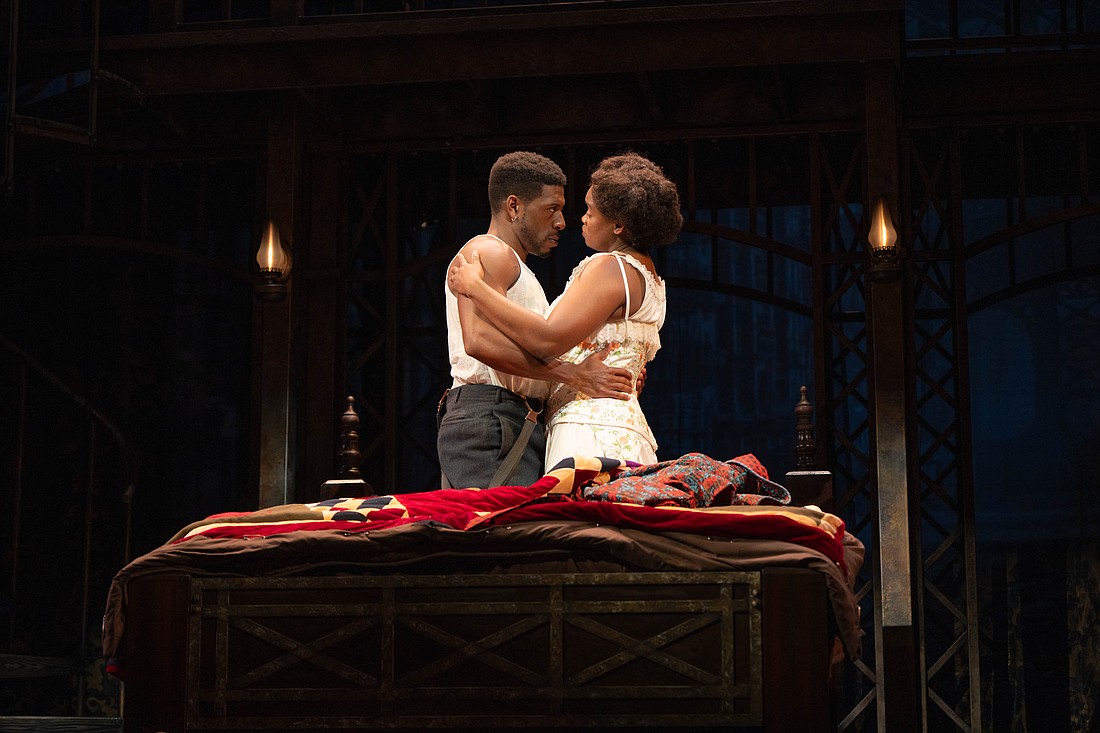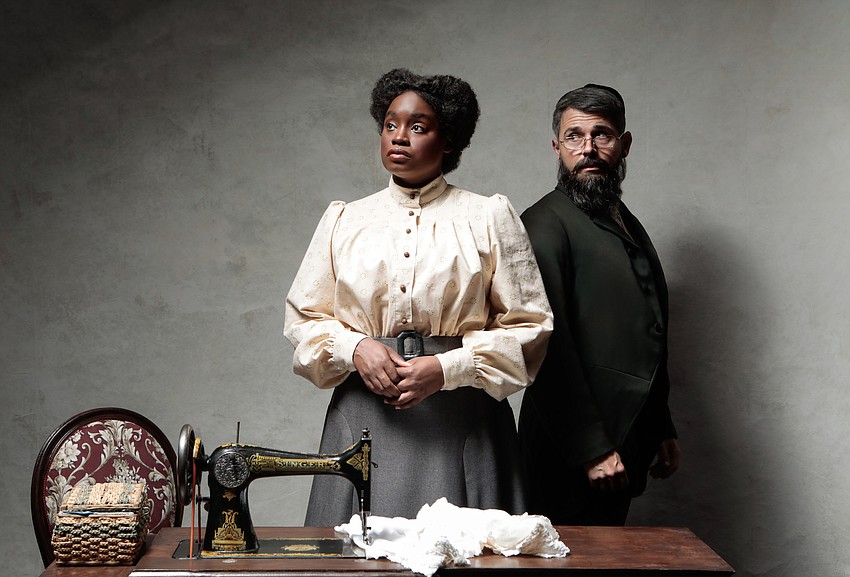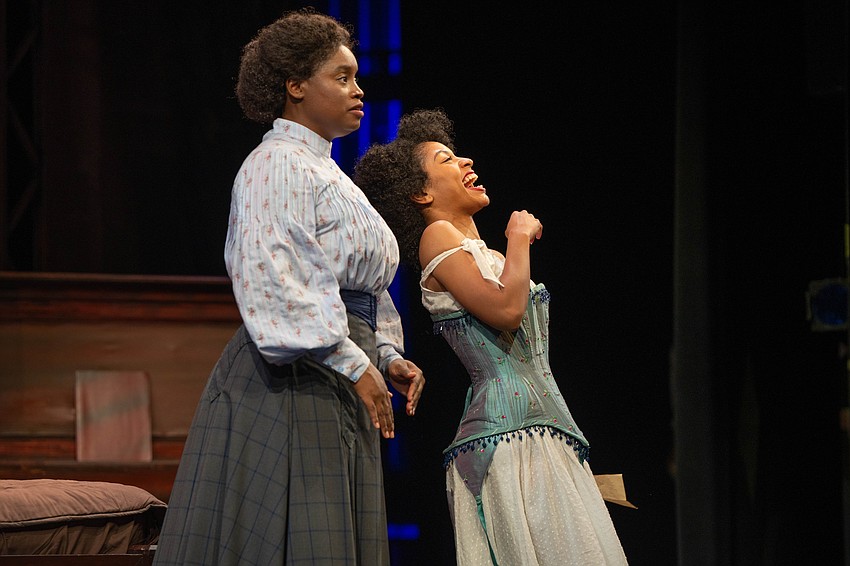- May 20, 2025
-
-
Loading

Loading

Clothes and words have much in common. Both can reveal or conceal the true self. Both can also be used to create desire. Lynn Nottage’s “Intimate Apparel” explores this dichotomy. Director Austene Van looks at both sides in the current Asolo Repertory Theatre production.
Nottage’s play tells the story of Esther, a highly skilled, 35-year-old seamstress. She’s an African-American, living and working in a boarding house in New York City in 1905. Esther (Aneisa J. Hicks) specializes in racy “intimate apparel,” although her own life is romantically frustrated.
She’s surrounded by a constellation of five other characters, each with their own invisible barriers. As the director describes it, “Intimate Apparel” explores the tension between the characters' authentic inner selves and what they’re willing to let other people see. According to Van, that human dynamic is timeless.
“‘Intimate Apparel’ is about a Black seamstress who's dealing with unrequited love and her ambitions in early 20th-century New York,” Van says. “But the playwright really looks at the way we draw lines and separate ourselves from other people. In 1905, the characters segregate themselves from other human beings because of fear, traditions or ignorance. That’s not a thing of the past. The divisions Esther dealt with haven’t gone away.”
In 1905, a progressive journalist might have blamed those divisions on prejudice. Today, we’d probably blame compartmentalization.
Nottage’s deft use of language evokes the characters’ authentic personalities and heritage. The playwright has a keen ear for dialect and speech patterns. Patricia Delorey, this show’s voice and dialect coach, translates the text in her script to spoken language. On stage, it all rings true.
Sasha Andreev plays Mr. Marks, an Orthodox Jewish refugee from Romania. He shares that, “My character grapples with his cultural and religious heritage under the circumstances of his newfound life in America. His immigrant experience is not uncommon. As an immigrant myself, I can certainly relate to it.”

He adds that Nottage has perfectly captured the imperfections in his character’s speech pattern.
“In analyzing my character’s dialogue, I found inconsistencies in the way he structures sentences. His grammar fluctuates, and the brokenness of his English adds to his vulnerability.”
Hicks finds similar insights in her character’s speech.
“Esther’s dialect isn't too far from my family’s when I grew up,” she says. “The Great Migration of African-Americans led to southern dialects and accents making their way up north, west and east. When I was little, Esther's voice was my grandmother's, grand-aunts’ and grand-uncles’ voices.”
There are no false notes in how the play’s characters speak. What they have to say is a different story,
In a spin on “Cyrano de Bergerac,” Esther corresponds with George (Curtis Bannister), a native of Barbados working on the Panama Canal. As their letters fly back and forth, their words create a bond of love. But those words are borrowed. It turns out both characters are illiterate. Their effusive love letters were penned by other people.
The play’s costumes also tell truths and lies. Mathew J. LeFebvre’s beautiful costume designs make the paradox of accessorized identity plain to see.
Mr. Marks dresses only in back. That’s no affectation. It’s an honest expression of his Orthodox Jewish faith and also a highly personal connection to his ancestral heritage. His suit once belonged to his father. When he wears it, his bond becomes more than skin deep.
But clothes can also create false impressions. They project the image that characters want other people to see, and what they aspire to be.
For the women of 1905, projecting an idealized image of femininity could be literally breathtaking. With a few suffragette exceptions, the women of this time stitched themselves up in corsets. The cult of thinness was in full force. And it hasn’t gone away.
“Then and now, women are pressured to ‘look feminine,’” says Van. “Make-up, wigs, high heels — all that stuff. But that pressure doesn’t come from us. Those constraints are manmade. This play shows us that Esther’s empowerment and self-possession don’t depend on her appearance. She really comes into her own.”

Clothes can also fake the man. At one point, Esther sews George a three-piece suit that makes him look like a successful man of means. (He really isn’t.)
“Intimate Apparel” has a lot of moving parts. For the director, stitching it all together in a fast-paced repertory production was a unique challenge.
“It’s a different beast,” laughs Van. “Asolo Rep rehearses and produces several plays simultaneously. It’s one of only five repertory theaters in the nation that still does that. You have to communicate better, be clearer, stay flexible, and move a little faster. It’s definitely been a learning experience!”
For the director, the experience was definitely worth it.
“‘Intimate Apparel’ has a lot to say about racial equity, class, and gender roles,” says Van. “In the end, it’s ultimately a character study. Esther begins and ends as a self-reliant character. She suffers cruel setback and reversals in the course of the play. But it doesn’t break her. Esther winds up in touch with who she really is beneath surface appearances. That’s her true source of strength.”